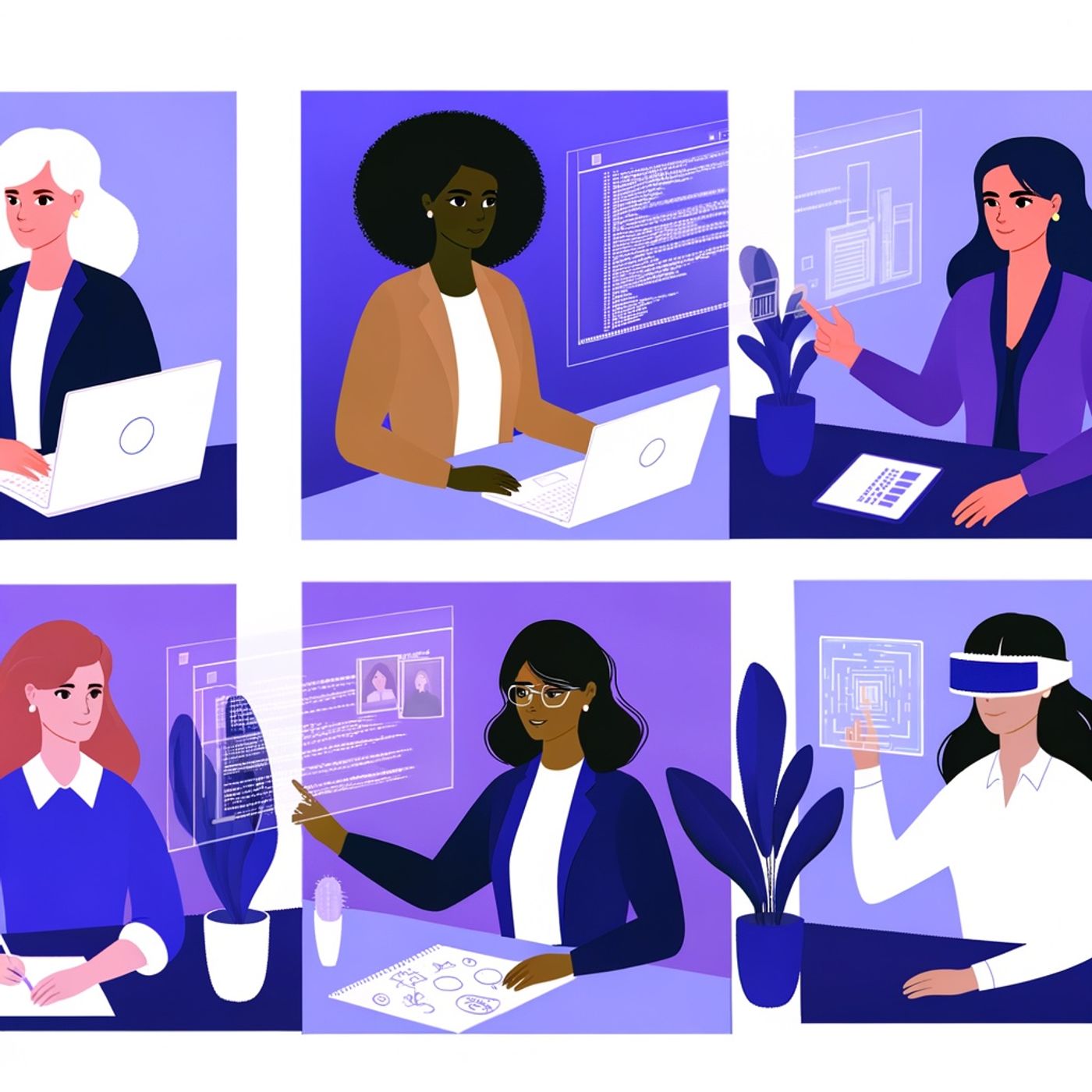Podcast Episode Details
Back to Podcast Episodes
Cracking the Code: Women Rewriting Tech's Future
This is your Women in Business podcast.
Welcome to Women in Business, the podcast where we amplify voices, share real stories, and spotlight powerful trends shaping the world of women entrepreneurs and leaders. Today, I want to dive straight into the heart of the tech industry—a place where digital transformation is rewriting every rule, yet women remain deeply underrepresented. According to the WomenTech Network and the 2025 Women in Digital Annual Report, women now make up only about 27% of the global tech workforce. That means, in a room of four engineers or developers, just one is likely to be a woman. For context, at industry giants like Amazon, Facebook, Apple, Google, and Microsoft, women still account for only about a third or less of the workforce. And at the leadership level, the stats are even more stark; just 17% of tech CEOs are women.
So, what does it take to navigate this persistent gender gap, especially when disruptive changes in the economy and technology are happening faster than ever? Let’s get real about five major themes shaping the journey for women in tech right now.
First, representation matters. But we’re not just talking numbers on a spreadsheet. When women hold less than a quarter of technical roles, this directly impacts everything from project direction to the inclusivity of product development. The gender pay gap persists, too; women in tech earn roughly 94 cents for every dollar earned by a male colleague in computer science, and the gaps can be much wider in other specialties. Closing this gap isn’t just a diversity requirement—it’s an economic imperative. McKinsey & Company has shown that achieving gender parity in tech could add an astonishing $12 trillion to the global economy by 2025. That’s not just theoretical; it’s a future we all have a stake in building.
Second, burnout and attrition remain huge challenges. The sudden shift to remote work during the pandemic offered flexibility for many women, but it also led to spikes in burnout. More than half of women in technology roles report leaving their positions by the age of 35, citing stagnant career growth, poor work-life balance, and barriers to advancement. So, it’s not only about getting more women into tech—it’s about keeping them and supporting them all the way to the top.
Third, the pipeline problem isn't just about encouraging girls to pursue STEM. Although more women are entering tech programs, only about 21% of computer and information science degrees are awarded to women. Cultural barriers, lack of visible role models, and disparities in early education still deter many young women from ever imagining a future in tech.
Fourth, AI and emerging technologies are rapidly rewriting skills requirements, and there’s a risk women could be left behind again. Skillsoft’s most recent report found that upskilling in artificial intelligence is crucial for women’s advancement, yet 60% of women in tech aren’t yet using AI at work. As businesses step up AI adoption, helping women build these skills isn’t optional—it’s mission critical to shaping an equitable digital future.
Finally, let’s talk leadership. For all the talk about glass ceilings, the biggest obstacle can be the “missing middle”—mid-career women who hit barriers like inflexible offices or lack of support as they navigate caregiving. If we want more women in boardrooms and C-suites, organizations must invest in flexible opportunities, sponsorship, and real pathways for progression.
Thank you to all the women blazing new trails in technology and everyone listening who’s ready to champion this movement. Your ambition, resilience, and advocacy are driving real change. Subscribe for more powerful stories, share this episode, and keep the conversation going—because when women rise in tech, everyone benefits. This has been a Quiet Please production, for more check out quiet please dot ai.
For
Published on 2 months ago